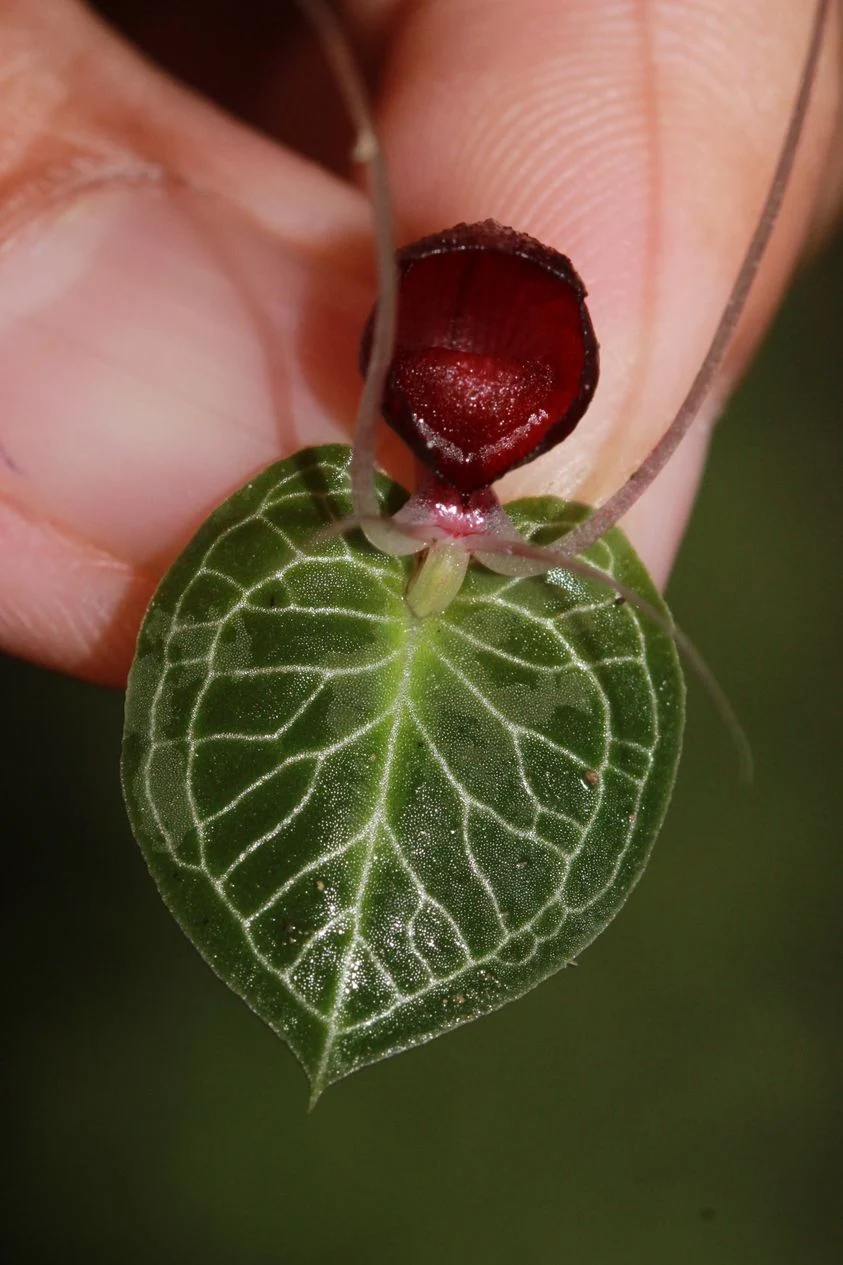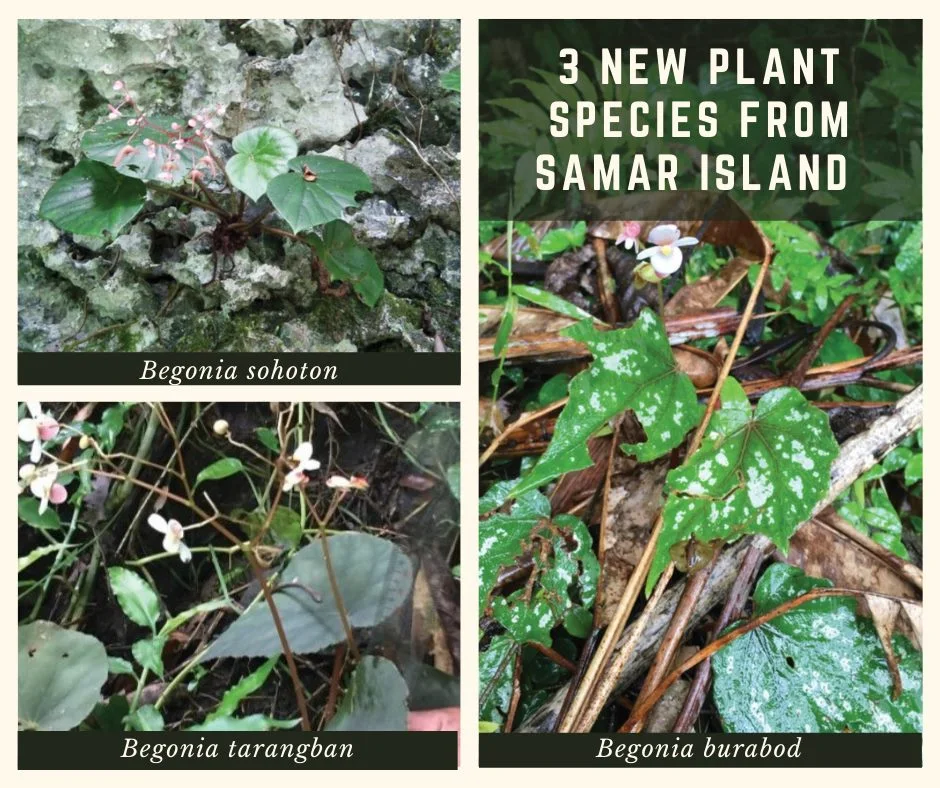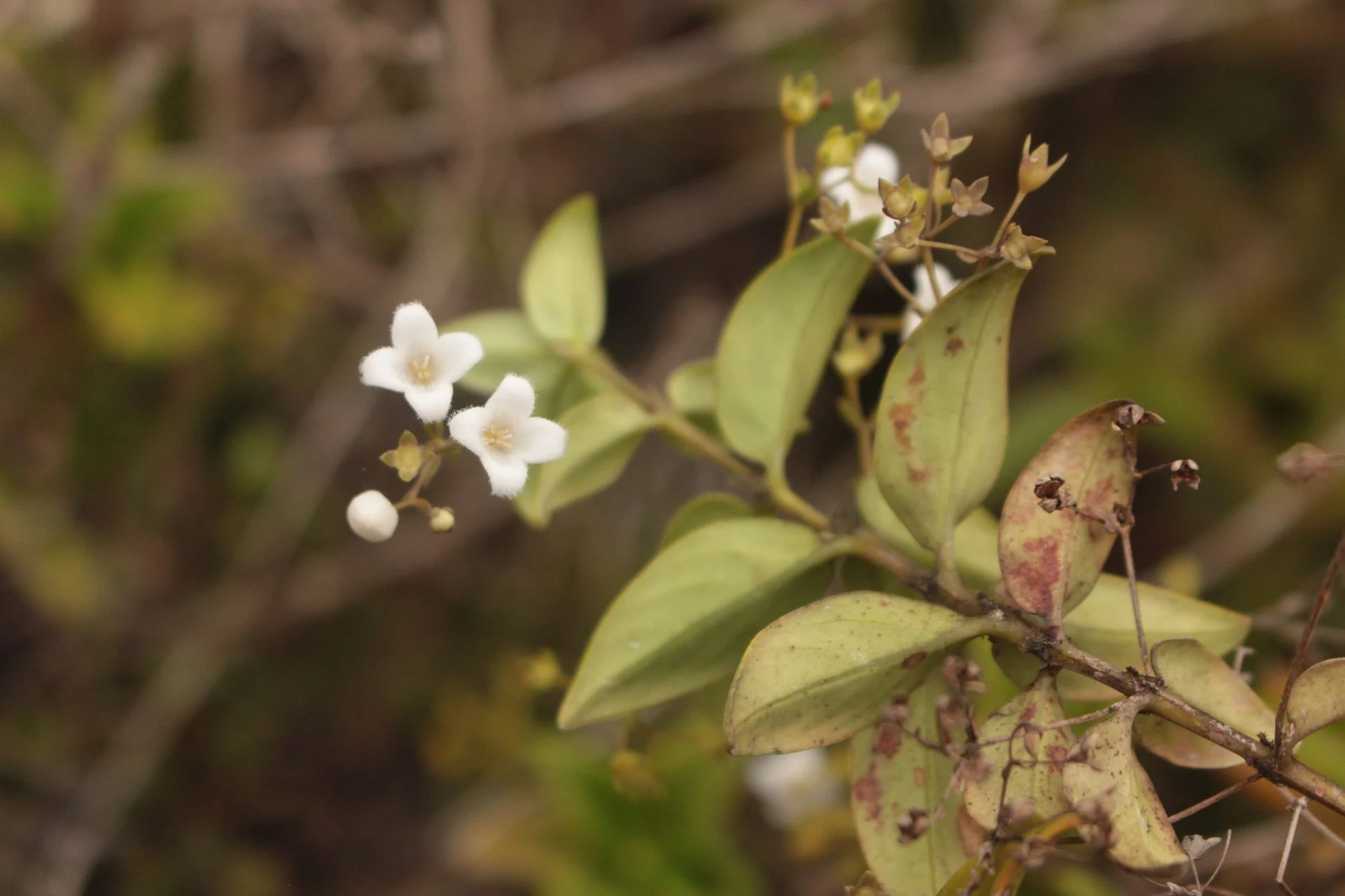New Plant Species Discovered in the Philippines | Described and Published in 2020-2022
Each year, the National Museum of the Philippines researchers discover and name species new to science which showcasing the country as one of the 17 megadiverse countries. This scientific discovery is an important baseline for ecological research, applied research, and conservation biology which are shared with the public through publications and exhibitions. The discovery of these rare plants is the first vital step in formulating government policies in protecting critical habitats.
Discoveries are results from the extensive botanical survey to mere serendipitous findings. The unexpected discovery of the new Corybas boholensis is a precise example of the saying looking for a needle in a haystack. Its bright red flower is like a hidden jewel on the gloomy forest floor. The ground orchids in the genus Corybas typically have a small underground tuber, a single heart-shaped leaf, and single brightly colored flower that the whole plant can fit on one-peso coin. Its minuscule size is a great challenge when looking for it in the field.
There are currently six species of Corybas found in the country and many more are yet to be discovered. They can be found in mossy forests, limestone karst forests, and ultramafic forests but are threatened by deforestation, “kaingin”, quarrying and mining. Knowing the presence of rare plants in such habitats promotes our immediate concern to formulate necessary actions on the protection and conservation of fragile ecosystems.
New Plant Discoveries
Let us look at the novel plant species described and published in 2020 by researchers from the #NationalMuseumPH. These discoveries are the result of collaborations with our partner institutions and organizations before the lockdown, engaging them in fieldwork activities across the remaining forests of our country.
 |
Dilochia deleoniae Tandang & Galindon, a new orchid species, was described from Mount Hamiguitan Range Wildlife Sanctuary. The new species is only the third species of that genus in the Philippines and the 11th species in the world. The specific epithet is named in honor of Josefina De Leon for her contribution, as former head of the Wildlife Resources Division of the Biodiversity Management Bureau of DENR, to the protection of wildlife resources in the Philippines. To know more about this species, click the link below: https://phytokeys.pensoft.net/article/46935/ Photo by John Michael Galindon |
Type materials of these new discoveries are stored and added to the growing collections of plants deposited in the Philippine National Herbarium, which is part of the National Museum of the Philippines.
 |
Timonius sulitii Merr. and Quisumbing ex J.G. Chavez and Tandang, is a new plant species from the coffee family, Rubiaceae. The species was now formally published, initially named by Elmer D. Merrill and Eduardo A. Quisumbing in the herbarium label of the type specimen but remained unpublished. It was named after Mamerto D. Sulit who collected the specimens during the rehabilitation of the Philippine National Herbarium (PNH) after the World War II. It is only known from its type locality in Mount Calbiga, Eastern Samar. To know more about this species, click the link below: https://www.tandfonline.com/.../23818107.2020.1759449... Illustration by Jason G. Chavez (from Chavez et al., 2020) |
These discoveries highlight the importance of protecting the remaining forest habitats in the Philippines and the sustained field research to document the unique flora of our country.
 |
Two species of helmet or jewel orchid was also published. First was the Corybas circinatus Tandang & R. Bustam., a new species endemic to the ultramafic habitats in the island of Palawan. The specific epithet ‘circinatus’ is the perfect passive participle of the Latin verb ‘circinare’ (to make round), meaning rounded, in reference to the highly distinctive strongly incurved dorsal sepal. It is classified as endangered due to the threat of declining populations as a result of anthropogenic activities. To know more about this species, click the link below: https://www.biotaxa.org/.../art.../view/phytotaxa.446.2.7... Photo by Danilo N. Tandang |
We are sure you would like to learn more about these newly discovered jewels in the forests! But a word of caution to the avid gardeners that increased during the lockdown - fondly referred to as plantitos and plantitas - please do not encourage your plant suppliers or do not hunt for these for your hobby.
 |
Second was the Corybas boholensis Tandang, R. Bustam., T. Reyes Jr. & S.P. Lyon, a critically endangered jewel orchid confined in the forest over limestone habitats in the island of Bohol. Species of Corybas are unique from other known orchid species, typically with a small, single leaf and single flower with hood-like dorsal sepal, earning them a nickname ‘helmet orchids’. They are miniscule and hidden among forest litters, making them very hard to find. To know more about this species, click the link below: https://www.biotaxa.org/.../article/view/phytotaxa.477.2.10 Photo by John Rey C. Callado |
Poaching them in certain areas will lead to habitat destruction. Click each of the fascinating photos below and help us preserve these endemic species.
 |
Three species of begonia were also described, all in the island of Palawan. First was Begonia truncatifolia R. Bustam., Tandang, Pranada & Y.P. Ang which was discovered in the northern town of San Vicente and thrives in shaded riparian forest habitat on exposed limestone rocks. The specific epithet ‘truncatifolia’ is derived from the truncated upper portion of the leaves. To know more about this species, click the link below: https://www.mapress.com/j/pt/article/view/phytotaxa.458.3.4 Photo by Ang Yu Pin (PhytoImages.siu.edu) |
 |
Second was the Begonia beijnenii Y.P. Ang, Tandang, Rubite & R. Bustam. discovered from an unexplored region of Port Barton in San Vicente, Palawan. This species is named after conservationist and biologist Jonah van Beijnen, who first discovered and reported about the species, and also in acknowledgement for his conservation efforts across Palawan; in particular his advocacy to raise The Cleopatra’s needle Mountain Range to protected area status. To know more about this species, click the link below: https://www.biotaxa.org/.../article/view/phytotaxa.455.3.2 Photo by William cabanillas (PhytoImages.siu.edu) |
 |
Third was the Begonia cabanillasii Y.P. Ang, Tandang, J. Agcaoili & R. Bustam. currently known only from El Nido, Palawan. The specific epithet is named after William Cabanillas in acknowledgement of his continuous effort and advocacy towards discovery, protection and conservation of biodiversity resources in the Philippines. The Philippines is considered one of the centers of Begonia species diversity in the world and the discovery of these species brings the total to 141 species currently known in the country. To know more about this species, click the link below: https://www.biotaxa.org/.../article/view/phytotaxa.453.3.6 Photo by Ang Yu Pin (PhytoImages.siu.edu) |
Newly discovered species of Begonia from Samar Island
Begonia sohoton was named after the locality Sohoton River where the new species was discovered. Did you know that the word “sohot” means to go through a narrow passage? This was noted as one of the characteristics of B. sohoton which arises from tiny crevices of the limestone walls.
Begonia tarangban is endemic to Tarangban Falls, Calbayog, Samar island where it was named after and discovered. The species grows on semishaded rocky slopes near the falls. This new species is noted with similar characteristics with Begonia biliranensis but further analyses shows distinct differences in its internodes, stipules and flowers.
Begonia burabod was named after the Waray word “burabod” which means spring which reflect the moist habitat of Begonia. This species grows abundantly on soil slopes that are shaded and moist.
Samar island is considered as one of the centers of plant endemism in the Philippines that needs more protection from anthropogenic activities. These discoveries were made by researchers from various institutions (University of the Philippines Manila, University of the Philippines Los Baños, National Museum of the Philippines and Taiwan Forestry Research Institute). One of them is our Senior Museum Researcher Danilo N. Tandang. Read more about the new species and their proposed conservation status by clicking this link https://bit.ly/3kUWma5
Text and photo based from the research paper
𝐒𝐦𝐚𝐥𝐥 𝐬𝐡𝐫𝐮𝐛 𝐢𝐧 𝐌𝐭. 𝐇𝐚𝐦𝐢𝐠𝐮𝐢𝐭𝐚𝐧- 𝐚 𝐧𝐞𝐰 𝐟𝐥𝐨𝐫𝐚 𝐬𝐩𝐞𝐜𝐢𝐞𝐬 𝐝𝐢𝐬𝐜𝐨𝐯𝐞𝐫𝐞𝐝
Despite having not enough molecular data that supports the genetic relationship of Hedyotis species in the Philippines, the thoroughgoing study made it possible to catalogue a new species in the country.
𝐻𝑒𝑑𝑦𝑜𝑡𝑖𝑠 ℎ𝑎𝑚𝑖𝑔𝑢𝑖𝑡𝑎𝑛𝑒𝑛𝑠𝑖𝑠 is the newest addition to these species- a first of its kind discovered in Mt. Hamiguitan Range Wildlife Sanctuary in Davao Oriental.
Two populations were discovered separately- one in the mossy, the other in the mountain’s pygmy forest. The sighting was impelled during the fieldwork of the Thomasian Angiosperm Phylogeny and Barcoding Group from the University of Santo Tomas and specimens were then collected in April 15, 2017. The said month is said to be the flowering and fruiting period of 𝐻. ℎ𝑎𝑚𝑖𝑔𝑢𝑖𝑡𝑎𝑛𝑒𝑛𝑠𝑖𝑠.
The researchers described it as a shrub that is 0.5- 2m tall, stems terete about 1-2mm in diameter with olive and maroon coloration on some parts.
𝐻. ℎ𝑎𝑚𝑖𝑔𝑢𝑖𝑡𝑎𝑛𝑒𝑛𝑠𝑖𝑠 is the 37th Hedyotis species in the Philippines- that's out of its 180 global population. However, the conservation status of the said species is still unclassified due to data deficiency.
How important is conducting biodiversity assessment and scientific study in our forests especially in our protected areas?
Clint Michael Cleofe, Ecosystems Management Specialist of DENR XI says scientific research is a never ending process from describing new species, population estimate, distribution and uses, among others.
“The results of scientific research serve as guide for protected area managers, such as here in Mt. Hamiguitan, as to how we can conserve, protect and sustainably manage the existence of various species, especially those that are endemic, threatened and economically important.” Cleofe emphasized.
____________________
Credits
Text by John Michael Galindon, Botany and National Herbarium Division
© National Museum of the Philippines (2021)









No comments:
Got Something to Say? Thoughts? Additional Information?